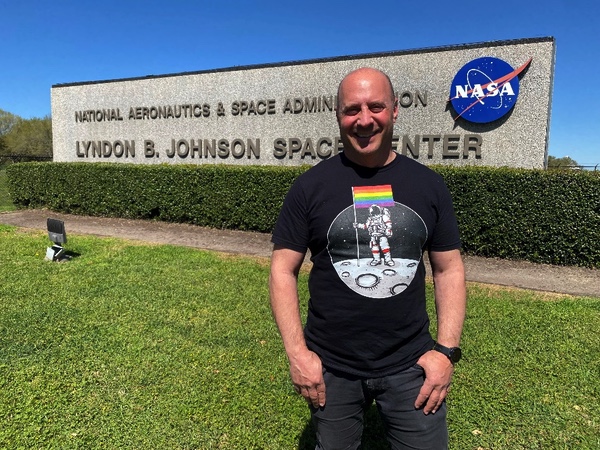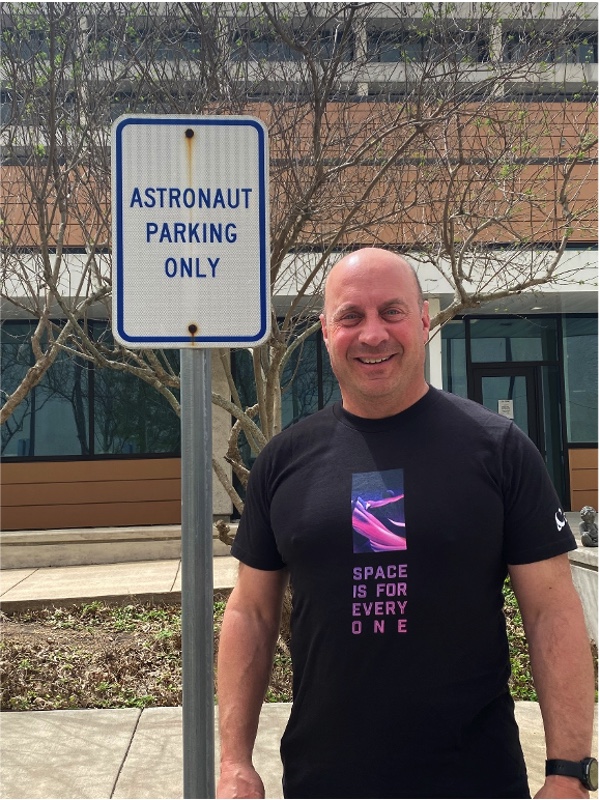I’m a former astronaut: NASA workers are afraid, and safety is at riskby Garrett Reisman
|
| This year I found an environment of fear and uncertainty that struck me as a serious safety concern. |
When I made my annual trip last March, the Trump Administration was in the process of vilifying federal workers and pursuing an anti-diversity, equity and inclusion strategy across the federal workforce, which was resulting in plain old discrimination. I asked to meet with NASA employees who were members of Employee Resource Groups (ERGs) such as the “Out and Allied”, African American, Hispanic, Women Excelling in Life and Leadership, and Parenting ERGs. I was trying to send a message that there were still many of us in the space community who, to paraphrase, hold these truths to be self-evident, that we are all created equal and endowed with certain unalienable rights. However, my primary intent was just to listen and learn.
These civil servants told me that before the 2024 election of Donald Trump they felt welcomed at NASA. They felt like they belonged, and their contributions were valued. In fact, in 2020, the NASA administrator appointed by Trump, Jim Bridenstine, added inclusion to the agency’s list of core values, joining safety, integrity, teamwork and excellence. But this time around, things are obviously different. All of the ERGs listed above had been banned as part of the anti-DEI crusade. Pride flags were being taken down, websites celebrating the accomplishments of women and people of color were disappearing, and email signatures stating a person’s preferred pronouns were prohibited.
None of the NASA employees I spoke with felt secure in their jobs or safe from persecution. It is true that many members of the NASA workforce who are not members of historically marginalized groups are also concerned about losing their jobs. However, members of these vulnerable communities inside the NASA family have no confidence that management will downsize according to objective merit-based criteria. Instead, they expect to be the first to be fired regardless of their job performance and capabilities.
A Hispanic female engineer told me of being harassed by co-workers who taunted her with claims that she would soon be deported. In the current environment it is not clear if there is any recourse to combat this type of harassment. No one wants to have the reputation of being a “complainer” and it’s not clear if reporting incidents of racial or sexual harassment would achieve results that would outweigh the backlash.
Not only does this discrimination have a profound effect on individuals, but it can also have a devastating effect on the safety of flight. Even on a typical day, it is often difficult to get engineers to speak up with dissenting views, and technical experts holding back their opinions can lead to disastrous consequences. The tragic loss of the Space Shuttles Challenger and Columbia, which resulted in the deaths of 14 astronauts, both occurred after management silenced dissenting views. There were engineers who knew that Challenger’s O-rings would not work properly at low temperatures, and there were engineers who knew that the foam that hit Columbia’s wing during launch could cause catastrophic damage. In both cases their safety concerns were dismissed by higher-ups, but at least they were voiced.
In the current environment of fear and uncertainty at NASA, it will be more challenging than ever to elicit dissenting views, making it more difficult than ever to prevent the next human spaceflight tragedy.
 Former astornaut Garrett Reisman at the Johnson Space Center (credit: the author) |
Let me be clear, NASA is a large bureaucratic agency that can be inefficient and resistant to change. In fact, my frustration regarding obstacles to innovation at NASA was the reason I left the agency in 2011 and joined SpaceX. A more agile and innovative workforce at NASA would indeed be a good thing, and I understand that enacting large-scale change in an organization with considerable institutional inertia is very difficult. However, there is potential for great harm to NASA even if the streamlining is executed by leadership with the best of intentions.
The initial downsizing has occurred via a voluntary workforce reduction. The Trump Administration’s deferred resignation program resulted in nearly 4,000 NASA employees opting to leave, or about 20% of NASA’s workforce. Some of these employees were about to retire anyway and perhaps some of them were not making critical contributions to NASA’s mission, but the problem with this approach is that often the people who choose to go are the ones whom NASA needs to stay. Indeed, the loss of critical expertise and experience when a contractor relocated their workforce was an important contributing factor to bad decision making during the Columbia space shuttle tragedy.
The next phase of downsizing will not be voluntary; it will consist of layoffs. While this phase can be tailored and targeted by leadership to increase NASA’s agility, in the wrong hands it can be an excuse to discriminate.
| Based on my experience at SpaceX, I assert that safety and progress are not mutually exclusive, and I challenge NASA to accomplish both without compromising either. |
Meanwhile, the safety of flight risk is increasing. The three biggest tragedies in NASA history are each spaced about 20 years apart. While this could be purely coincidental, human organizations tend to get complacent over time, and 20 years just might be the half-life of NASA’s vigilance. In the nearly 23 years since the Columbia tragedy, we have managed to sustain an admirable safety record in human spaceflight. But new safety challenges are arising with riskier missions as we prepare to send astronauts back to the Moon under the Artemis program and as the International Space Station, already cracked and leaking, continues to show its age.
I call upon NASA’s interim administrator, Sean Duffy; the new associate administrator, Amit Kshatriya; and the rest of NASA leadership to proceed with caution. Administrator Duffy said just this past week that “sometimes we can let safety be the enemy of making progress.” Based on my experience at SpaceX, I assert that safety and progress are not mutually exclusive, and I challenge NASA to accomplish both without compromising either.
Finally, let me remind you that it will be much harder to achieve our national ambitions in space without the contributions of everyone who has the talent and interest to help. So, as you reduce NASA’s workforce and work to reshape its culture it is imperative that you ensure that personnel decisions are made based only on performance and merit and not based on a person’s gender, race or sexual orientation. That is not only the right thing to do for NASA; it is the right thing to do period.
Note: we are now moderating comments. There will be a delay in posting comments and no guarantee that all submitted comments will be posted.
